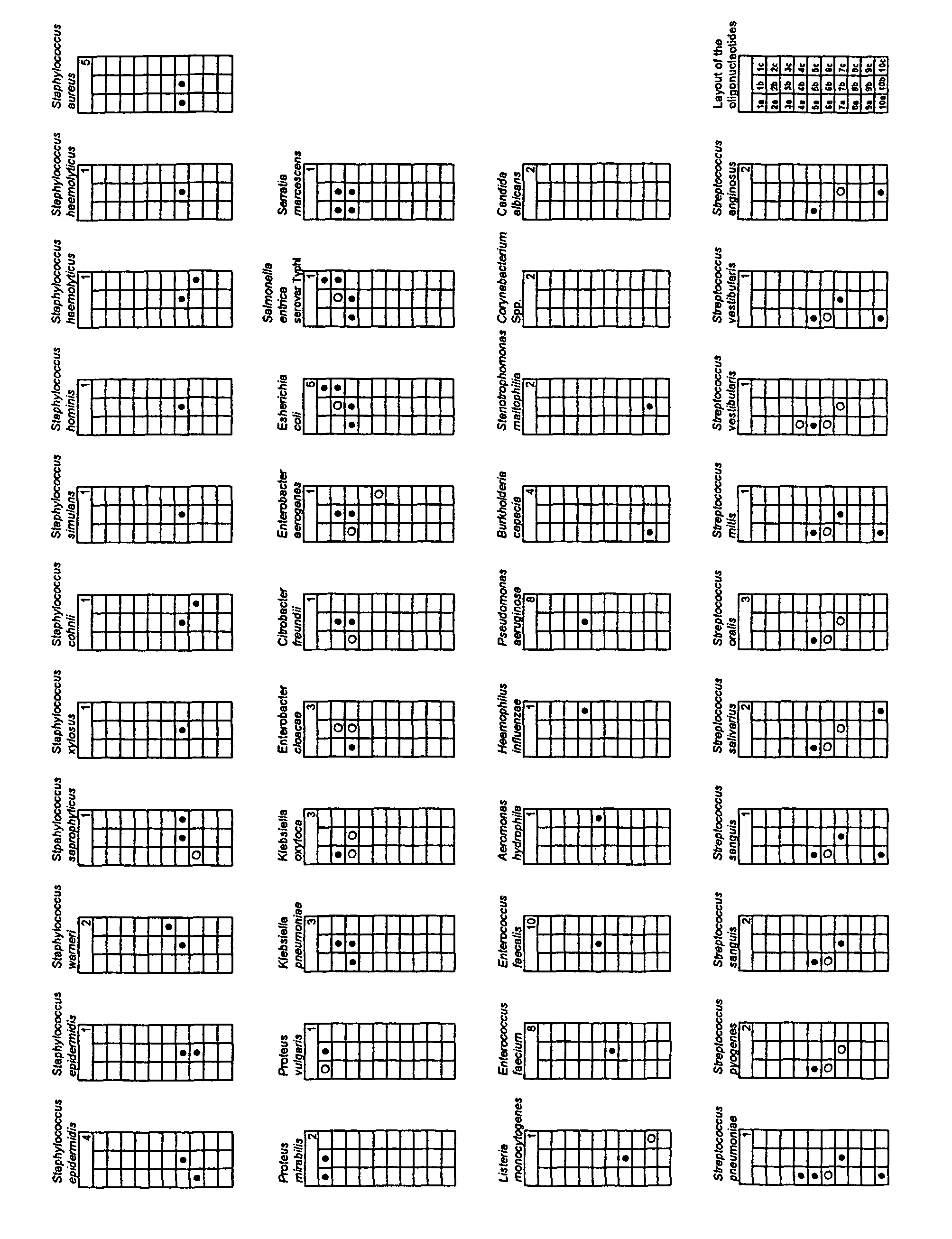Identification of bacteria by amplification and probing
- Summary
- Abstract
- Description
- Claims
- Application Information
AI Technical Summary
Benefits of technology
Problems solved by technology
Method used
Image
Examples
Embodiment Construction
[0007]The present invention comprises primers that amplify a portion of the 23S rDNA. The DNA sequences of these primers are set out below.
[0008]
Sequence 5′ to 3′Forward primer ST23SP6SEQ ID No 1GCGATTTCYGAAYGGGGRAACCCReverse Primer ST23SP10SEQ ID No 2TTCGCCTTTCCCTCACGGTACT
[0009]The sequences of the primers and oligonucleotides are given herein and expressed in standard IUB / IUPAC nucleic acid code. The primers, especially the reverse primer, are appropriately labelled e.g with Digoxigenin (as in the Example given below), biotin, or fluorescein. Any other labelling system can be used. Hybridization can also be detected by using the oligonucleotides to construct molecular beacons.
[0010]The Forward primer sequence given above contains the symbols Y and R. In accordance with standard terminology for use with degenerate sequences, Y represents nucleotides C or T and R represents nucleotides A or G. The symbols Y and R are used to indicate variability of base permutations at “wobble” regi...
PUM
| Property | Measurement | Unit |
|---|---|---|
| Electrical conductance | aaaaa | aaaaa |
Abstract
Description
Claims
Application Information
 Login to View More
Login to View More - R&D
- Intellectual Property
- Life Sciences
- Materials
- Tech Scout
- Unparalleled Data Quality
- Higher Quality Content
- 60% Fewer Hallucinations
Browse by: Latest US Patents, China's latest patents, Technical Efficacy Thesaurus, Application Domain, Technology Topic, Popular Technical Reports.
© 2025 PatSnap. All rights reserved.Legal|Privacy policy|Modern Slavery Act Transparency Statement|Sitemap|About US| Contact US: help@patsnap.com

